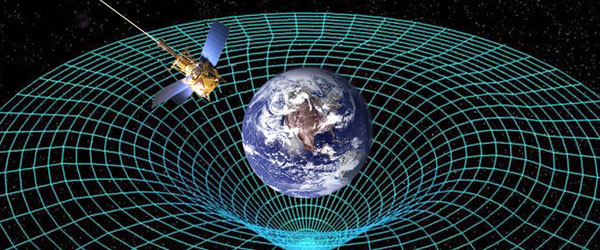Gravity 101 Part II
 In the previous article, we looked at what it means for an object to be in orbit; in this article, we will look into how we would move around in the orbital environment, either to rendezvous with (or avoid) another object, to move into a different orbit, or to leave Earth’s orbit entirely and go far, far away. Yes, I see you back there waving your hand; you may think I’m doing these out of order and should have covered, “how to get into orbit from the Earth” first. If you don’t like the order, then write your own articles. I have my reasons, mostly because the “getting into orbit” math is a bit trickier, and I don’t want to lose most of my audience just yet. By the way, there will be very little math in this article, so if the last one scared you a bit, don’t worry. I’m sure you’ve heard that before, but this time I’ll try drawing some pictures.
In the previous article, we looked at what it means for an object to be in orbit; in this article, we will look into how we would move around in the orbital environment, either to rendezvous with (or avoid) another object, to move into a different orbit, or to leave Earth’s orbit entirely and go far, far away. Yes, I see you back there waving your hand; you may think I’m doing these out of order and should have covered, “how to get into orbit from the Earth” first. If you don’t like the order, then write your own articles. I have my reasons, mostly because the “getting into orbit” math is a bit trickier, and I don’t want to lose most of my audience just yet. By the way, there will be very little math in this article, so if the last one scared you a bit, don’t worry. I’m sure you’ve heard that before, but this time I’ll try drawing some pictures.
Before diving in, let’s recall one of the key concepts from the last article since it is critical to this discussion. No, not the free lunch thing, but the consequence of it: Objects in higher orbits move slower than objects in lower orbits. So now, let’s consider the situation where we are in the same orbital path as another object, but behind it and we want to catch up to it. For the remainder of this article, I am going to present graphics created using Universe Sandbox (http://universesandbox.com/) which is an awesome playground for physics nerds. To start out I put two bowling balls in orbit around the Earth. Note that in these pictures, the objects are orbiting counterclockwise:

To set this up in Universe Sandbox, I locked the Earth’s position at the center of absolute space and put the two bowling balls (those that know me understand why I picked bowling balls) in nearly circular orbits (eccentricity close to zero), in the plane of the ecliptic (inclination close to zero, this means that our bowling balls are always above the equator), with a distance from the center of the Earth at 39,875 kilometers (no significance to that number, it just worked out that way). Then, I rotated the picture, so we’re looking down (or up) at it. I chose these setting to simplify what we’re looking at; we just want to get an idea of how things work, and let the nerds at NASA worry about the details. Now that I have a toy that takes care of all the really difficult math, we can use it to get a handle on what we set out to do. What we discover is that moving about in an orbital environment is quite non-intuitive. A good rule of thumb for this (blatantly borrowed from Larry Niven in his Nebula Award winning The Integral Trees, though its ultimate origin is most likely elsewhere): east takes you out, west takes you in, in takes you east, out takes you west, port and starboard bring you back, where east is the direction of your orbit with your feet pointing to the center of the Earth, and you are facing east.
Before you freak out, let me explain the simple consequences of those rules. Let’s assume that you have a rocket engine attached to your back so that firing the rocket pushes it in the direction that you are facing (remember Newton’s Third Law?). East takes you out – you’ve stayed in the original orientation looking east and fired your rocket engine in an attempt to speed up and catch up to something ahead of you. Bad idea; you will actually gain altitude but your speed, relative to the object that you are chasing, will slow down (for the nitpickers in the crowd, by “altitude,” I mean the semi-major axis of the ellipse, since the operation results in an increase to that value, stretching out the elliptical orbit, increasing the eccentricity, but tangent to the original orbital path). It will appear to you that you are rising above the other object:

In Universe Sandbox, you simply select bowling ball 2 and increase its total velocity, or in Universe Sandbox notation:
I doubt that that Pythagoras guy knew that his theorem applied to three (or more) dimensions or more than just distances, but it’s all true! Now let things move in time:


West takes you in – Okay, let’s turn ourselves around and attempt to slow down. This is just the opposite of the previous rule, you will move in to a lower orbit and it will appear to you that you dropped below the object that you are chasing (missed again):



Getting frustrated? Let’s try pointing our engine toward the center of the Earth (looking away from Earth). Firing your engine now pushes you into a higher slower orbit so you see the object you were chasing moving off to the east. Someone sitting on that object would see you go off to the west, so out takes you west. For those of you trying to follow along using Universe Sandbox, this operation is a bit trickier. The easiest way to mimic a rocket firing directly inward or outward is: let the system run and play around with the time steps, eventually pause the system when the x velocity or y velocity is as close to zero as you can get it (and save the system at that point), and change it to a large positive or negative number:

At this point, people on bowling ball 1 see bowling ball 2 drift off to the west (remember that east/west are relative to the direction of orbital motion; west is stuff that’s behind bowling ball 1).


Okay, let’s turn around and try rocketing straight down towards the Earth. Now we will move into a lower, faster orbit:


People on bowling ball 1 see bowling ball 2 drift to the east. Wait a second, now we’re catching up to our target but we’re beneath it, what should we do now? (yes, I want you to answer that, I’ve been doing all of the work so far). Here’s the final result:

What about the last two rules? Port and Starboard (left and right for the nautically disinclined) thrusts change the inclination of your orbit, but after you go around the Earth, you will return to the same point in space (that’s actually true about all of the orbital operations). Disclaimer – in the above discussions, it is assumed that you are applying short bursts of thrust in the prescribed directions. If you fire a continuous burst of thrust until you run out of fuel, I will not be held accountable for where you end up). Hopefully, you see now that contacting another object in orbit requires at least two maneuvers – one to catch up from below (or slow down to let it catch up to you below you) and then another to slide into the same orbit (you’ll also generally need at least a third to match the inclination).
For a more detailed (which means a lot of math) discussion of some of this orbital stuff take a look at Andrew Love’s presentation covering Physics in Science Fiction on Larry Niven’s web site – http://www.larryniven.net/physics/img0.shtml and, if you haven’t already, you will probably want to read Larry’s The Integral Trees and Ringworld first (highly recommended by me).
Well now, what about escaping Earth orbit completely and flying off somewhere far, far away? This is called the Escape Velocity. The escape velocity is defined as the initial speed required to propel an object out of the gravitational influence of a larger object and end up infinitely far away with a final speed of zero. Yeah, I know, I’m mixing my words here, but what drops out of the formula that I’m about to show you is a scalar quantity (a number), not a vector. First, let’s make sure we understand a few things. By initial speed, we mean that you fire your engines to get up to that speed and turn them off; we can only carry so much fuel. Second, it is fairly important here that you choose the right direction (vector) to point your rocket. I think it’s pretty obvious that you should not choose to point yourself at the Earth or backward in your orbit. Port or Starboard are also a little silly, let’s just choose the direction of our orbit. The magic formula is:
Where G is Newton’s gravitational constant, M is the mass of the Earth and r is the distance from the center of the Earth. But wait a second, there was a formula in the previous article that I didn’t actually use (aha, foreshadowing) and we can use that to simplify our math:
Where $latex v_{o}$ is the circular orbit speed that we calculated from a different (but equivalent, trust me) formula. So, for a rocket on the ISS travelling in orbit at 17,488 mph:
Since we are already at orbital speed, we only need to increase our speed by 7,244 mph. Well yes, but (you knew it was coming) there is one thing I forgot to tell you (actually it was intentional). Accelerating to this speed will allow you to escape the Earth’s gravity field, but the Earth also orbits the Sun. And the Sun’s gravity is pretty strong, even though it’s far away (93,000,000 miles). So far, we’ve been able to ignore the Sun’s gravity because the Earth was the biggest thing around, but once we go far enough away from the Earth, the Sun takes over as the biggest thing around (or maybe Jupiter or Saturn or…). You’ll have to do a little more work to escape the solar system. As my Math professors loved to say, the rest is left as an exercise.
So what did we learn today?
- When in orbit, you can’t just point and shoot, you’ll miss every time.
- Except with cameras (ooh wait, Einstein said that gravity also bends light, another topic!).
- The Sun also sucks.
- So does Jupiter and Saturn.
Well that’s two down, I think one more will just about cover all the topics I wanted to hit. Next time we’ll take a look at getting into and out of orbit, and, maybe, determine how much fuel we might need to reach that escape velocity speed we calculated above (or leave it as an exercise, the math will be there).




